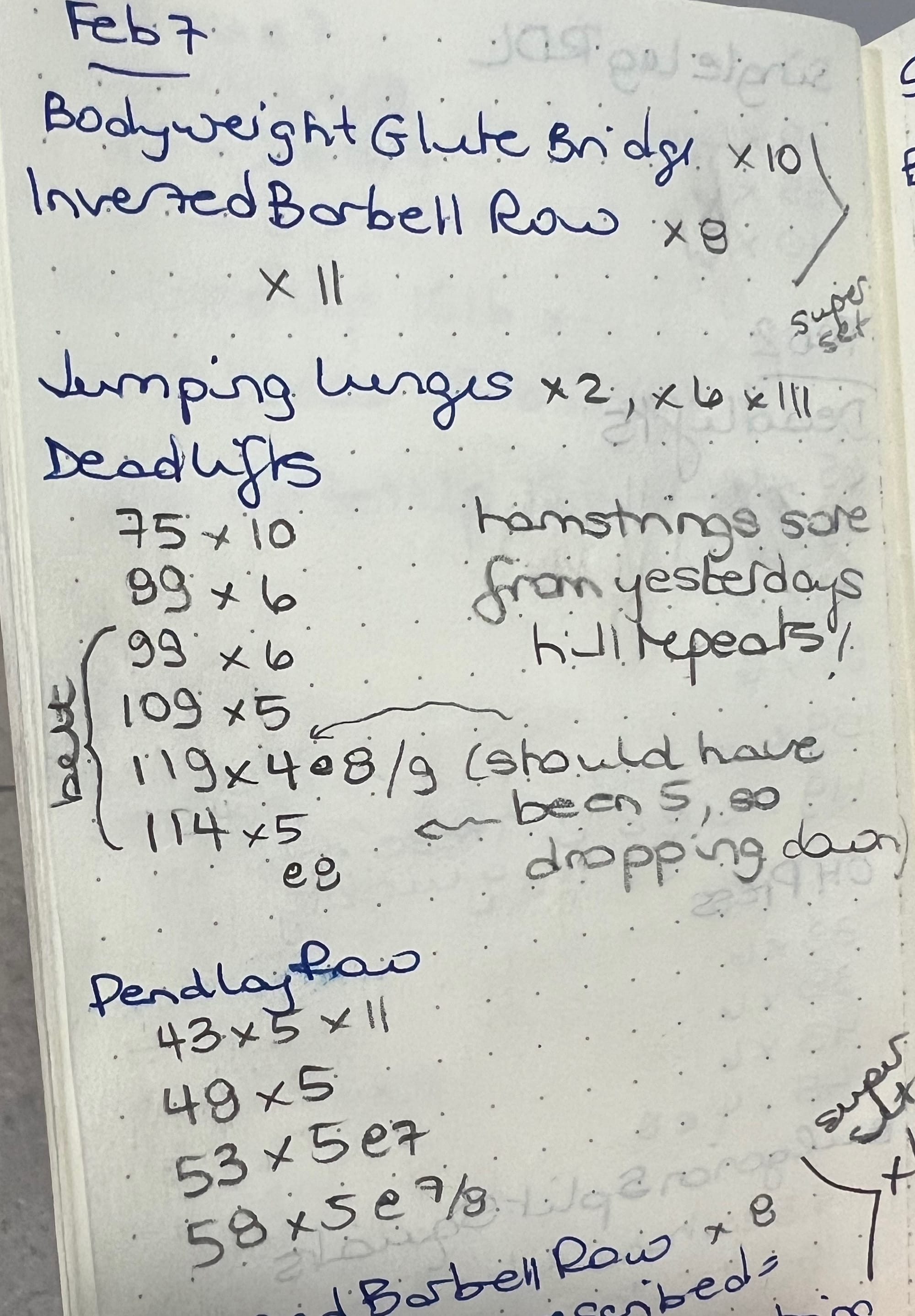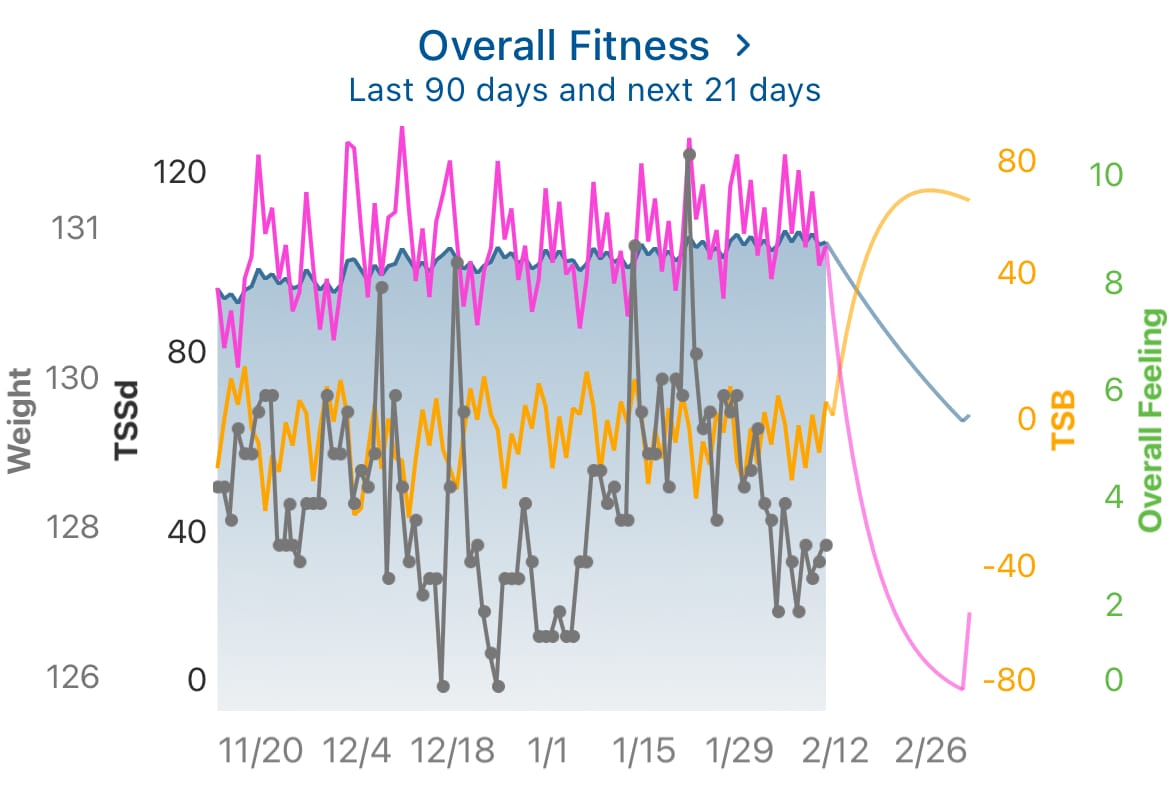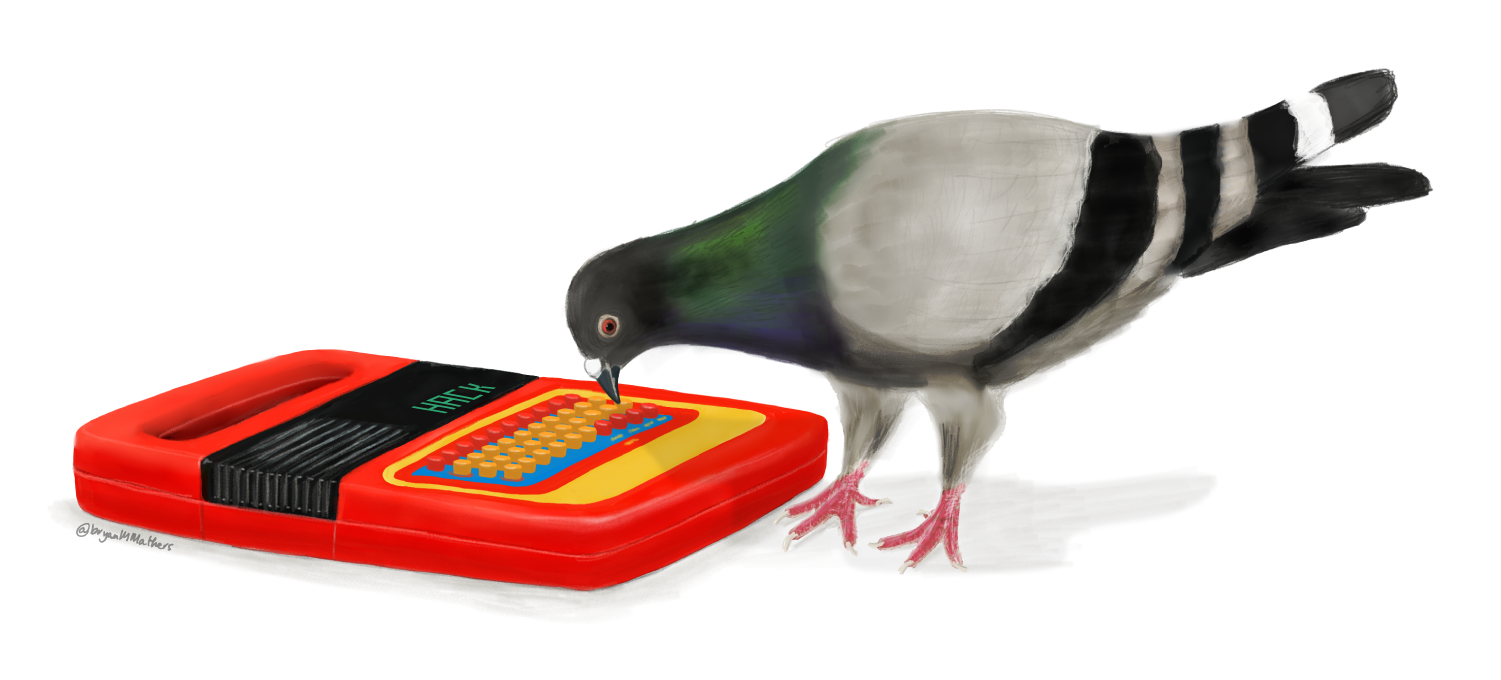The Case for a Paper Fitness Journal

There are, of course, hundreds of apps that you can use to track your exercises. Perhaps your coach uses one of these to assign you your workouts. Perhaps you use an app that generates workouts for you. Perhaps you use an app that’s linked to your fitness tracker, and it encourages you to do all your record-keeping there, promising to give you algorithmic feedback. Perhaps your coach encourages you to do all your record-keeping in an app, so that they can give you non-algorithmic feedback. (I mean, I hope that’s what you’re getting from paying a coach not a computer program to design your training.) Perhaps you use an app that tracks your workouts, not for the algorithmic feedback but from the kudos and comments from your friends who use the app too.
I’ve tried many of these, and I’m sure you have too. I’ve abandoned a lot of them, but I still have a number of fitness apps on my phone — more than I care to admit frankly. And although I don’t use or update them all regularly, I do find myself spending a fair bit of time keeping several of them up-to-date. I’m not going to argue that any of these individual apps are bad (or good for that matter). Go ahead; use whichever you want. I’m here to make the case for a paper journal. (Truthfully, I’m trying to make this case to myself.) And then I want to think a little bit about how and why our leisure time is increasingly being overrun with the kinds of tasks one would have traditionally have associated with bureaucratic work — paperwork gone digital. A paper journal is, of course, still paperwork, but I want to explore whether or not the practices associated with paper are substantively different than the demands of apps.
When I started powerlifting at Bay Strength in July 2021, my coach suggested that I bring a notebook to the gym to keep a record of my workouts. And several years later and thousands of miles away, I still carry a little Moleskine journal, along with a pen and a pencil, to the squat rack and the bench; where I write down every lift and every rep and every weight, along with the RPE (Rate of Perceived Exertion) for the top sets. I jot down little notes to myself — comments that echo my coach’s advice. “Bury that squat!” “Not deep enough.” “Squeeze your armpits.” “Elbows in.” “Knees apart.” I write down which hole to put the safeties in for pin squats or which hooks I should use for a close-grip bench press — I can never remember. I take note how I feel before, during, or after — justifications for why things went well or poorly: “Gravity was very strong today. WTF.”
Even if and when I’m assigned a workout digitally, I still record things with pencil and paper. If I’m not working with a coach who wants me to record things digitally, the paper record is the only record I keep.
Before I do anything (other than claim a squat rack — IYKYK), I sit down and label a page in my journal with the date. Then I write down the lifts I’m doing. (I use pen for this. It looks nicer.) Then I write down the weights I plan to lift so that I can hit my target top weight for the day, which ideally is a little bit more than what I lifted the last time I was in the gym. (I flip back to that page in the journal to check.)
So, say, for squats, I’ll warm up with the bar (that’s 45 lb), then do reps at 65, 75, 85, 95, and 105 lb. I’ll write those in pencil. Then as I do each set of warmups, I’ll add how many reps I did: 45 x 10, 65 x 6, 75 x 6 and so on. As I don’t lift “to failure” (that is, to the maximum I can do — @10 RPE) but typically to @8 RPE (meaning I could keep going for two more reps), my last three sets constitute my “working sets.” I also jot down the RPE for those, along with whether or not I wore my lifting belt. This is all in pencil, as I said, because sometimes things change, and you need that eraser. Sometimes I’m stronger than I anticipated and, after my warmups, I realize I can add more weight. Sometimes I can’t eke out the last rep in that last set. Sometimes I get to my @7 lift and realize that the @8 one is not going to be as heavy as I thought. I’ll write a note about what went great and what went wrong and why.

All this will help me the next time I’m doing that lift — to gauge the amount of weight I can put on the bar, the movement of my body, the mantra in my brain. (Because the next time I lift, I’m going to be stronger — that’s ”progressive overload,” where you want to gradually increase the workload so that you gain strength and/or muscle size.)
Digital technologies promise that they’re the best or even the only way that you can track data. That’s ridiculous — we know that’s ridiculous. Humans have been keeping track of numbers in little notebooks for hundreds if not thousands of years, and using that information to get strong, wage war, die rich, get handsome (to borrow from The Mountain Goats). We’re encouraged now track things digitally — whether in a spreadsheet or database or app. It’s easier, we’re told. Digital tracking can be done with devices that do the tracking of things like heart rate, duration, distance for us. Uploading data to an app also means that we can more easily “glean insights” from all the information that’s tracked. Fitness apps can make pretty line graphs that show that you are indeed lifting more weight than you were a month ago (even though you know you are, right? Because that’s how progressive overload works).

But there are a lot of problems with this framework. Firstly, I’m not convinced that “insight” comes from looking at the kind of data — numbers, mostly — that these apps track. Sure, an app might be able to tell you how much you lifted the last time you did a mid-shin block pull. (It might. It might not have mid-shin block pull in its database. Or it might have it without the hyphen and as such cannot find a record of you having done this lift before.) But it’s unlikely to have the note that you made in your paper journal, explaining why your coach assigned this lift in the first place — “helps with the middle of the deadlift.” Or the notes that appear every time I am told to do tempo squats: “Coach hates me.” Apps might have open-ended fields where you can add comments (typically for the entire workout) but this data is rarely resurfaced in any programmatic analysis.
And sure, I’m a humanities person — I am more interested in the story, not the number. I believe that it’s the qualitative, as much as the quantitative data that aids us in reflection, learning and growth. Of course the numbers signal something, but without context, without words it’s sometimes hard to tell what they signal other than “more” or “less.”
I’ve started keeping a written journal for my runs too, even though my watch tracks a ton of data and funnels it into Strava (for friends) and Training Peaks (where I get my training plan). I write about some of the things those apps also track — how far I went and how fast. I write down what shoes I was wearing, what the weather was like, what clothes I wore, what I saw, the podcast or music or audiobook I listened to, how I felt — not just remarks on how hard or easy the run felt, but a more broad reflection of my brain and body, my attitude, my mood.
All this data. All this time spent updating and reflecting and tracking. Is it helpful? I’m not sure. Potentially — which I think is part of the reason why we can be reluctant to simply stop.
There’s something about all this tracking that, as I have argued elsewhere, is bound up in “optimization culture.” Tracking is supposed to help us be better, faster, stronger. But I do wonder if all this emphasis on techno-efficiency isn’t actually encouraging behaviors that are, in fact, wildly counter- or un-productive. Or rather — because I don’t write this to help us better privilege “productivity” — we spend a lot of time tracking numbers, putting them in spreadsheets, making graphs and charts, and then deciding actually, wait no, we’d rather use a different piece of software so then we find ourselves redoing or duplicating everything. We spend so much time using “productivity software” and yet we’re not “productive” at all. We’re just busy doing some office-sanctioned (Microsoft Office™-sanctioned) version of “cow-clicking.” It’s not just, as David Graeber argued, that we’re busy doing “bullshit jobs.” It’s that this bullshit framework has spilled over into all aspects of our lives; and we’re now all using spreadsheets and other corporate software tools to manage our weekends, analyze our sex lives, plan our kids’ after-school activities, manage our meals, fine-tune our vacations, optimize our fitness routines.
This is all top-of-mind for me lately as I recently decided to try out Notion, one such “productivity” tool, to organize the editorial calendar here at Second Breakfast. And that’s probably the warning signal right there — a decision to try a different piece of software to “manage my workflow” rather than actually writing and scheduling the newsletters. (”Project management” is a direct descendent of Taylorism, and as such is, at its course about engineering time and efficiency.)
For what it’s worth, I did manage to set up a pretty bare-bones system in Notion that will work for my needs — better (I hope) than the scattershot method of using Apple’s Calendar and Tasks and some Google Docs and even (god forbid) Scrivener to brainstorm ideas and start drafts and schedule things. But the templates that Notion offers to get started are anything but simple. Indeed, I was overwhelmed by their complexity — and wildly unimpressed with the promise of using AI to “write content” and “get better.” And then, I saw this template for tracking running goals in Notion.
And I broke out a brand new Moleskine instead. Running goal: use a paper journal.
Thanks for being a Second Breakfast subscriber. Your support helps pay for paper journals and other things that help me think through Silicon Valley's plans to engineer our bodies.





